White Fig, Banyan, Deciduous Fig
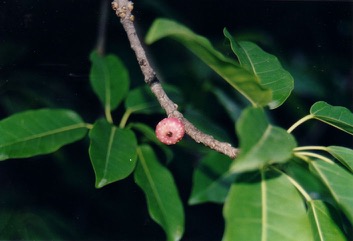
It is a tropical plant. It grows in a range of locations including rocky outcrops and rainforest. It needs well drained soil. It can grow in dry and humid regions. It is damaged by frost. In China it grows between 300-2700 m altitude in S China. Melbourne Botanical gardens. It suits hardiness zones 10-12. In XTBG Yunnan. In Townsville Queens BG.
Also known as:
Aaw, Albayi, Amchar, Biguan Rong, Chakkila, Ge bpong yang, Gelong den, Hishi, Hpak-hi, Kabra, Labra, Lu huang ge shu, Neme adao, Niza bao, Nuo na zi, Nyaung-chin, Nyaung-gyin, Nyaung-shin, Pakar, Pakur, Pa luo, Payer, Pen-cap banyan, Phak lueat, Pilkhan, Putkal, Sour buds tree, Suan bao shu
Synonyms
- Ficus carolinensis Warb.
- Ficus cunninghamii (Miquel) Miquel
- Ficus infectoria Miq.
- Ficus infectoria Roxb. var. lambertiana King
- Ficus lacor Buch.-Ham.
- Ficus lucescens Blume
- Urostigma lambartiana Miq.
- and others
Edible Portion
- Fruit, Leaves
Where does White Fig grow?
Found in: Africa, Andamans, Asia, Australia, Bhutan, Cambodia, Caroline Islands, China, Chuuk, East Timor, Egypt, Hawaii, Himalayas, India, Indochina, Indonesia, Laos, Malaysia, Myanmar, North Africa, Northeastern India, Pacific, Pakistan, Papua New Guinea, PNG, Philippines, SE Asia, Sikkim, Solomon Islands, Sri Lanka, Thailand, Timor-Leste, United States, Vanuatu, Vietnam
Notes: There are about 800-1000 Ficus species. They are mostly in the tropics. There are 120 Ficus species in tropical America.
Status: It is a preferred vegetable. It is sold in local markets.
Growing White Fig, Banyan, Deciduous Fig
Cultivation: Trees can be grown from seed or aerial layers. Cuttings from young shoots strike easily. It often naturally starts in the fork of a host tree and eventually strangles and kills the other tree.
Edible Uses: The fruit are eaten. The young leaves are cooked and eaten. They are also used in soup. The buds or stipules are boiled to give a sour taste.
Production: Trees grow quickly. In Australia, fruit mature June to October.
Nutrition Info
per 100g edible portion| Edible Part | Energy (kcal) | Protein (g) | Iron (mg) | Vitamin A (ug) | Vitamin c (mg) | Zinc (mg) | % Water |
|---|---|---|---|---|---|---|---|
| - | - | - | - | - | - |
White Fig, Banyan, Deciduous Fig Photos

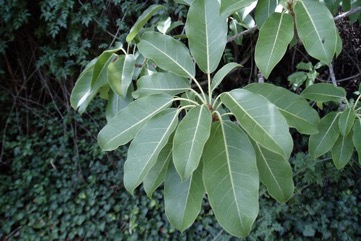
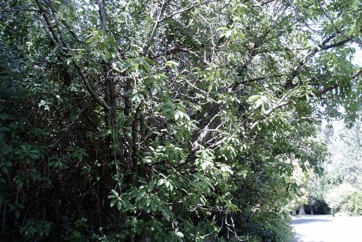
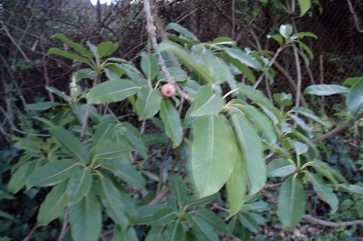
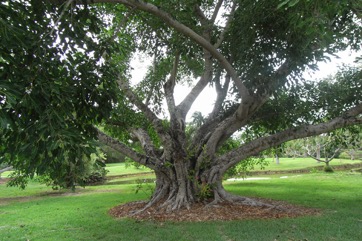
References
Abdel-Hameed, E. S., 2009, Total phenolic contents and free radical scavenging activity of certain Egyptian Ficus species leaf samples. Food Chemistry 114: 1271-1277
Ajesh, T. P., et al, 2012, Ethnobotanical Documentation of Wild Edible Fruits used by Muthuvan Tribes of Idukki, Kerala-India. International Journal of Pharma and Bio Sciences 3(3): 479-487 (As Ficus virence var. virence)
Anderson, E. F., 1993, Plants and people of the Golden Triangle. Dioscorides Press. p 211
Anon., 2003, Native Plants for the Fitzroy basin. Society for Growing Australian Plants Inc. (Rockhampton Branch) p 56
Beasley, J., 2011, Plants of Tropical North Queensland - the compact guide. Footloose publications. p 97
Brock, J., 1993, Native Plants of Northern Australia, Reed. p 190
Calvert, G., 2010, The Burdekin Delta Tree Guide. Lower Burdekin Landcare Association., Inc., Ayr p 85
Cancilla, D., 2018, Ethnobotanical and Ethnozoological Values Desktop Assessment - Eliwana Project. p 13
Cao, Y., et al, 2020, Ethnobotanical study on wild edible plants used by three trans-boundary ethnic groups in Jiangcheng County, Pu’er, Southwest China. Journal of Ethnobiology and Ethnomedicine (2020) 16:66
Cooper, W. and Cooper, W., 2004, Fruits of the Australian Tropical Rainforest. Nokomis Editions, Victoria, Australia. p 328
Cowie, I, 2006, A Survey of Flora and vegetation of the proposed Jaco-Tutuala-Lore National Park. Timor-Lests (East Timor) www.territorystories.nt/gov.au p 51
Cundall, P., (ed.), 2004, Gardening Australia: flora: the gardener's bible. ABC Books. p 604
Dobriyal, M. J. R. & Dobriyal, R., 2014, Non Wood Forest Produce an Option for Ethnic Food and Nutritional Security in India. Int. J. of Usuf. Mngt. 15(1):17-37
Elliot, W.R., & Jones, D.L., 1992, Encyclopedia of Australian Plants suitable for cultivation. Vol 4. Lothian. p 292 (Drawing)
Etherington, K., & Imwold, D., (Eds), 2001, Botanica's Trees & Shrubs. The illustrated A-Z of over 8500 trees and shrubs. Random House, Australia. p 329
Flora of Australia, Volume 3, Hamamelidales to Casuarinales, Australian Government Publishing Service, Canberra (1989) p 33, 34
Flora of China.
Flora of Pakistan. www.eFloras.org
French, B.R., 2010, Food Plants of Solomon Islands. A Compendium. Food Plants International Inc. p 85
GUPTA, (As Ficus infectoria)
Hearne, D.A., & Rance, S.J., 1975, Trees for Darwin and Northern Australia. AGPS, Canberra p 71, Pl 17
Hibbert, M., 2002, The Aussie Plant Finder 2002, Florilegium. p 102
Hort. kew. 3:451. 1789
Jackes, B.R., 2001, Plants of the Tropics. Rainforest to Heath. An Identification Guide. James Cook University. p 67
Jones D, L, 1986, Ornamental Rainforest Plants in Australia, Reed Books, p 221
Kannan, M., et al, 2015, Ethnobotanical survey on wild edible plants of Kalrayan Hills, Salem District, Tamil Nadu, India. Global J. Res. Med Plants & Indigen. med. 4(12): 236-246
Kenneally, K.E., Edinger, D. C., and Willing T., 1996, Broome and Beyond, Plants and People of the Dampier Peninsula, Kimberley, Western Australia. Department of Conservation and Land Management. p 139
Krishen P., 2006, Trees of Delhi, A Field Guide. DK Books. p 100
Kunwar, R.M. & Bussmann, R. W., 2006, Ficus (Fig) species in Nepal: a review of diversity and indigenous uses. Lyonia 11(1)
Lazarides, M. & Hince, B., 1993, Handbook of Economic Plants of Australia, CSIRO. p 114
Lebot, V. & Sam, C., Green desert or ‘all you can eat’? How diverse and edible was the flora of Vanuatu before human introductions?. Terra australis 52 p 408
Levitt, D., 1981, Plants and people. Aboriginal uses of plants on Groote Eylandt. Australian Institute of Aboriginal Studies, Canberra. p 104
Lord, E.E., & Willis, J.H., 1999, Shrubs and Trees for Australian gardens. Lothian. p 16
Low, T., 1991, Wild Food Plants of Australia. Australian Nature FieldGuide, Angus & Robertson. p 80
Martin, F.W. & Ruberte, R.M., 1979, Edible Leaves of the Tropics. Antillian College Press, Mayaguez, Puerto Rico. p 206 (As Ficus infectoria)
Melzer, R. & Plumb, J., 2011, Plants of Capricornia. Belgamba, Rockhampton. p 211
Mukhia, P.K., et al, 2013, Wild plants as Non Wood Forest Products used by the rural community of Dagana, a southern foothill district of Bhutan, SAARC Journal, 27 pages
Nicholson, N & H., 1994, Australian Rainforest Plants 4, Terania Rainforest Publishing. NSW. p 35
Paczkowska, G . & Chapman, A.R., 2000, The Western Australian Flora. A Descriptive Calatogue. Western Australian Herbarium. p 332
Pearson, S. & A., 1992, Rainforest Plants of Eastern Australia. Kangaroo Press p 110
Pradheep, K., et al, 2016, Wild edible plants used by Konyak tribe in Mon district of Nagaland: Survey and inventorisation. Indian Journal of Natural Products and Resources. Vol 7(1) pp 74-81
Sharma, B.D., & Lakshminarasimhan, P., 1986, Ethnobotanical Studies on the Tribals of Nasik District (Maharashtra). J. Econ. Tax. Bot. Vol. 8 No. 2 pp 439-446
Shi, Y. et al, 2014, An ethnobotanical study of the less known wild edible figs (genus Ficus) native to Xishuangbanna Southwest China. Journal of Ethnobiology and Ethnomedicine. 10:68
Shin, T., et al, 2018, Traditional knowledge of wild edible plants with special emphasis on medicinal uses in Southern Shan State, Myanmar. Journal of Ethnobiology and Ethnomedicine (2018) 14:48
Smith, M & Kalotas, A. C., 1985, Bardi Plants: An Annotated List of Plants and Their Use by the Bardi Aborigines of Dampierland, in North-western Australia. Rec. West Aust. Mus. 1985, 12(3): 317-359
Smith, N and Wightman, G.M., 1990, Ethnobotanical Notes from Belyuen Northern Territory Australia. Northern Territory Botanical Bulletin No 10. Parks and Wildlife Commission of the Northern Territory. p 14, 15.
Smith, N. M., 1991, Ethnobotanical Field Notes from the Northern Territory, Australia, J. Adelaide Bot. Gard. 14(1): 1-65
Staples, G.W. and Herbst, D.R., 2005, A tropical Garden Flora. Bishop Museum Press, Honolulu, Hawaii. p 411
Sukarya, D. G., (Ed.) 2013, 3,500 Plant Species of the Botanic Gardens of Indonesia. LIPI p 292
Sundriyal, M., et al, 2004, Dietary Use of Wild Plant Resources in the Sikkim Himalaya, India. Economic Botany 58(4) pp 626-638
Swaminathan, M.S., and Kochnar, S.L., 2007, An Atlas of major Flowering Trees in India. Macmillan. p 262
Terra, G.J.A., 1973, Tropical Vegetables. Communication 54e Royal Tropical Institute, Amsterdam, p 46 (As Ficus infectoria)
Townsend, K., 1994, Across the Top. Gardening with Australian Plants in the tropics. Society for Growing Australian Plants, Townsville Branch Inc. p 215
Valder, P., 1999, The Garden Plants of China. Florilegium. p 286
Vigilante, T., et al, 2013, Island country: Aboriginal connections, values and knowledge of the Western Kimberley islands in the context of an island biological survey. Records of the Western Australian Museum Supplement 81: 145-182
Wheeler, J.R.(ed.), 1992, Flora of the Kimberley Region. CALM, Western Australian Herbarium, p 83
Wightman, G. M. & Andrews, M.R., 1989, Plants of Northern Territory Monsoon Vine Forests (Vol 1). Conservation Commission of Northern Territory. p 44
Williams, J.B., Harden, G.J., and McDonald, W.J.F., 1984, Trees and shrubs in rainforests of New South Wales and Southern Queensland. Univ. of New England, Armidale. p 66
Williams, K.A.W., 1999, Native Plants of Queensland Volume 4. Keith A.W. Williams North Ipswich, Australia. p 196
World Checklist of Useful Plant Species 2020. Royal Botanic Gardens, Kew
Yunupinu Banjgul, Laklak Yunupinu-Marika, et al. 1995, Rirratjinu Ethnobotany: Aboriginal Plant Use from Yirrkala, Arnhem Land, Australia. Northern Territory Botanical Bulletin No 21. Parks and Wildlife Commission of the Northern Territory. p 42.